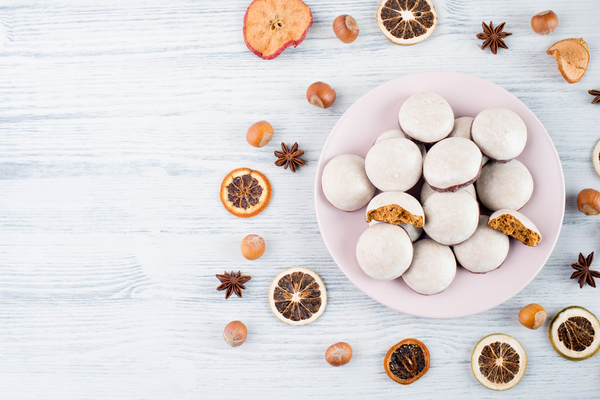It’s Christmas time, and you know what that means – or at least you should know what that means if you live in or have relatives from Germany, Denmark or The Netherlands – it’s Pfeffernüsse (can also be spelled Pfefferneusse) Cookie time! The exact origin of this tasty crunchy little cookie treat is still uncertain. The traditional Dutch belief links the pepernoten to the feast of Sinterklaas, celebrated on December 5 in The Netherlands and December 6 in Belgium and Germany, where the biscuit has been part of European yuletide celebrations since the 1850’s, and are similar to the German ‘lebkuchen’, a type of gingerbread. This is when children receive gifts from St. Nicholas, who is partially the inspiration for the Santa Claus tradition. However, a number of Scandinavian countries have their own recipes of a similar named and tasting cookie, which is probably the main cause for confusion.
If you were curious, the pronunciation is:
[FEHF-fuhr-noos].More Pfeffernüsse Fun Facts:
- ‘Pfeffernüsse’ are also known as ‘peppernødders’, ‘pfeffernusse’, ‘peppernuts’ and ‘pebernødder’.
- Though recipes differ, all contain cinnamon, cloves, mace, nutmeg, cardamom, and anise. Sometimes the cookies can be a tad bitter due to the spice combination, so some variations include powdered sugar, or an “icing sugar” coating. Molasses and honey are used to sweeten the cookies.
- Pfefferneusse are traditionally very hard and firm once cooked. Because of this they are typically dunked in liquid prior to consuming.
- Pfeffernüsse are popularly and traditionally eaten during holidays, particularly at Christmas or during the Christmas season.
- Pfeffernüsse are typically ginger-coloured, with a snowy white coating, and home made cookies are best left to develop their flavours and soften for a few days before being eaten.
- Pfeffernüsse are among the biscuits with the least amount of fat, as they generally lack butter and oil, although recipes vary greatly, and some do use butter.
- Pfeffernüsse are generally shaped as round balls or drops, and can be often purchased from supermarkets and other shops, although these are usually soft cookies.
—
Photo Credit: Berit Kessler / Shutterstock.com
